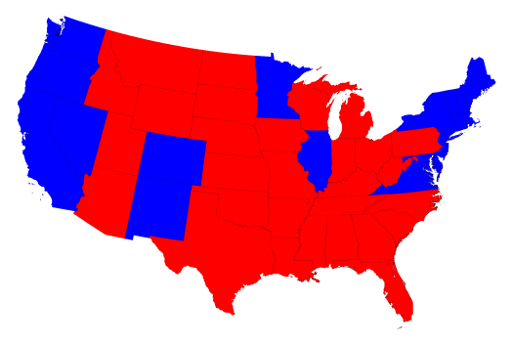
Wednesday, November 4
When I first heard the term conformism, I thought: “Yeah—I know all about that.” I didn’t need a dictionary. I lived in Memphis, where the people I knew couldn’t imagine any place better to live.
History books said that American conformism had seen its high-water mark in the 1950s. The Man in the Gray Flannel Suit. The Air-Conditioned Nightmare. The national preference for buttoned-down lives of prosperous ordinariness was, the books said, challenged by only a few, such as Greenwich Village beatniks. As Richard Yates put it in his bleak look at that period’s middle-class, suburban life, Revolutionary Road: “Nobody gets excited or believes in anything except their own comfortable little God damn mediocrity.”
The 1960s, on the other hand, were an era of non-conformism—or so the history books told us. The University of California’s free-speech movement protested against those who would fold, spindle, or mutilate the computer-generated Berkeley students. The Students for a Democratic Society’s 1962 founding statement declared war on the “loneliness, estrangement and isolation” that kept people from reforming society. Before long, hippies were promoting free love and free acid. Turn on, tune in, drop out, as Timothy Leary put it.
But conformism was far from dead in the era of feelin’ groovy. Most white boys in my hometown of Memphis wanted nothing better than a good paying job, an obedient wife, a suburban ranch house, and endless games of golf on the weekends—leavened with a few shots of Jack in the Black.
And conformism is still very much with us today—as one more national election demonstrates. I believe that it’s not ideology that compels all of the Northeast to vote Democratic—or the Old Confederacy to vote Republican. It’s largely conformism.
I suspect few white people in Memphis even know anyone who voted for Biden.
Certainly in New York, the expectation is for just the opposite—that everyone is voting for Biden.
These pleas that you hear from the various celebrities and pols that you GO VOTE—they’re not calls for good citizenship. No, they think they know who you will be voting for.
In The New York Review of Books, Yale historian David W. Blight recently wrote : “Democrats represent a coalition held together loosely by an ideology of inclusion, a commitment to active government, faith in humanistic and scientific expertise, and an abhorrence of what they perceive as the monstrous presidency of Donald J. Trump. Republicans, with notable defections, are a party held together by a commitment to tax reduction, corporate power, anti-abortion, white nationalism, and the sheer will for power.”
Well, I suppose. But I doubt that voters are really drawn by such abstract ideals. Instead, I think conformism—doing what your neighbors are also doing—has a lot to do with just which candidate’s oval one fills in on the ballot.
I believe this is especially true when it comes to the so-called red states. Maybe that just represents my own conformism to blue-state norms—along with a lack of understanding of how anybody could vote for the short-fingered, mentally-ill vulgarian, Mr. MAGA. It’s that conformism that is pushing the U.S. toward an ever-greater sectionalism. Just look at the election-night maps on TV: big swaths of red bunched together, then big swaths of blue down the Atlantic and Pacific coasts.
Dinner: Wine-braised chicken with artichoke hearts, quinoa, and green salad.
Entertainment: More election news, the Danish film The 12th Man, and early-to-bed for two sleep-deprived political junkies.

